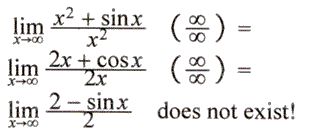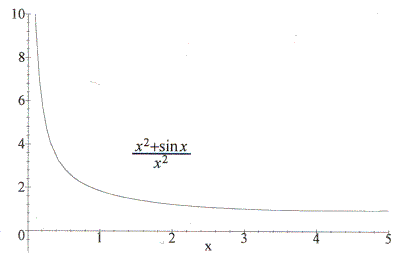

It is a beautiful Spring day. You are again jolly, for you have a backpack filled with schoolbooks and cornbread, and you are ready to have your lunch and start working on your calculus homework. You lay out your food and notebook on a picnic table, and suddenly a familiar scent catches your attention. "L'Hopitals rule, eh?'' comments a wild eyed stranger who has sat next to you. "Interesting stuff... if you don't mind reading LIES!''
"But L'Hopitals rule is useful! It is a true and wonderful technique of computing limits,'' you say.
"Useless!'' he bellows. "You show me a steak and baked potato with a side of L'Hopital's rule and I'll show you a steak and baked potato, by cracky!''
"What are you talking about?''
"Look at this, and see the lies exposed!''
The stranger writes this in your notebook:
;
"Why, yes, that is a very good use of L'Hopital,
and it proves my point,'' you say. You started with a hard limit in one of the standard
indeterminate forms, used L'Hopital twice, correctly I might add, and arrived at the
answer, that ![]() does not exist.''
does not exist.''
At that point the stranger laughs and laughs, and winds up saying between chortles, "Graph it then, Doctor Curie.''
Fearlessly, you graph ![]() , and come up with this.
, and come up with this.

"Looks like the limit is 1 to me. And last thing I heard was that 1 exists. Enjoy your johnnycake!''
You start to lose your appetite. Was L'Hopital lying all this time? Is the limit one? Or doesn't it exist? If "one" doesn't exist, then don't things start looking grim for 2, 3, and 4? Does it still take one to know one? Or is there a chance that the stranger made a mistake? Find the error.
Back to Find The Error!
Go to Doug Shaw's Professorial page
Copyright 2001 by Douglas Shaw